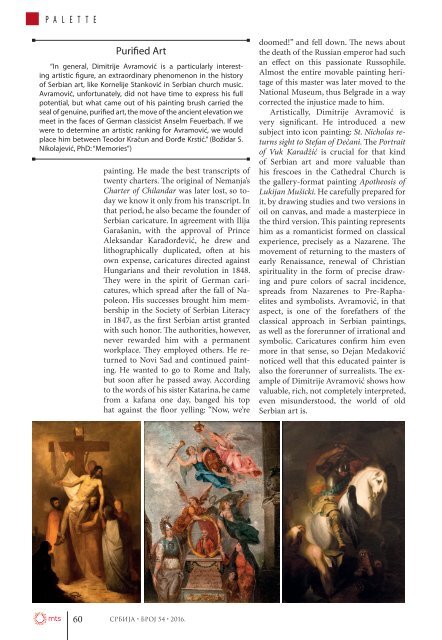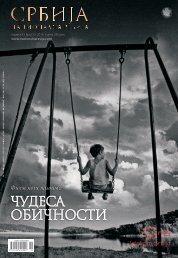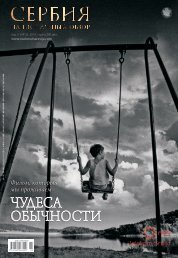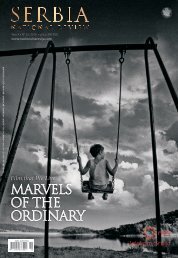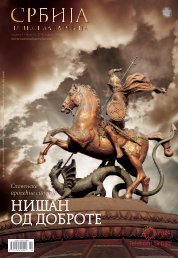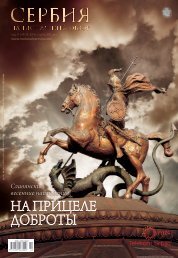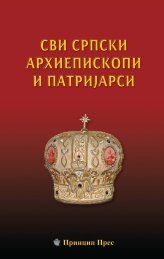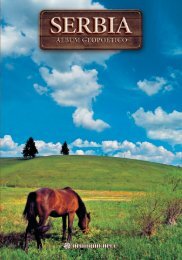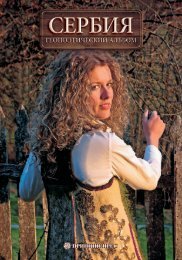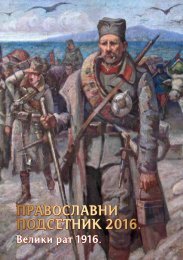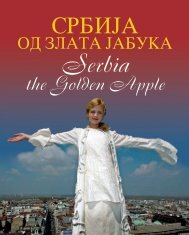Srbija - nacionalna revija - broj 54 - engleski - niska rezolucija
Create successful ePaper yourself
Turn your PDF publications into a flip-book with our unique Google optimized e-Paper software.
P A L E T T E<br />
Purified Art<br />
“In general, Dimitrije Avramović is a particularly interesting<br />
artistic figure, an extraordinary phenomenon in the history<br />
of Serbian art, like Kornelije Stanković in Serbian church music.<br />
Avramović, unfortunately, did not have time to express his full<br />
potential, but what came out of his painting brush carried the<br />
seal of genuine, purified art, the move of the ancient elevation we<br />
meet in the faces of German classicist Anselm Feuerbach. If we<br />
were to determine an artistic ranking for Avramović, we would<br />
place him between Teodor Kračun and Đorđe Krstić.” (Božidar S.<br />
Nikolajević, PhD: “Memories”)<br />
painting. He made the best transcripts of<br />
twenty charters. The original of Nemanja’s<br />
Charter of Chilandar was later lost, so today<br />
we know it only from his transcript. In<br />
that period, he also became the founder of<br />
Serbian caricature. In agreement with Ilija<br />
Garašanin, with the approval of Prince<br />
Aleksandar Karađorđević, he drew and<br />
lithographically duplicated, often at his<br />
own expense, caricatures directed against<br />
Hungarians and their revolution in 1848.<br />
They were in the spirit of German caricatures,<br />
which spread after the fall of Napoleon.<br />
His successes brought him membership<br />
in the Society of Serbian Literacy<br />
in 1847, as the first Serbian artist granted<br />
with such honor. The authorities, however,<br />
never rewarded him with a permanent<br />
workplace. They employed others. He returned<br />
to Novi Sad and continued painting.<br />
He wanted to go to Rome and Italy,<br />
but soon after he passed away. According<br />
to the words of his sister Katarina, he came<br />
from a kafana one day, banged his top<br />
hat against the floor yelling: “Now, we’re<br />
doomed!” and fell down. The news about<br />
the death of the Russian emperor had such<br />
an effect on this passionate Russophile.<br />
Almost the entire movable painting heritage<br />
of this master was later moved to the<br />
National Museum, thus Belgrade in a way<br />
corrected the injustice made to him.<br />
Artistically, Dimitrije Avramović is<br />
very significant. He introduced a new<br />
subject into icon painting: St. Nicholas returns<br />
sight to Stefan of Dečani. The Portrait<br />
of Vuk Karadžić is crucial for that kind<br />
of Serbian art and more valuable than<br />
his frescoes in the Cathedral Church is<br />
the gallery-format painting Apotheosis of<br />
Lukijan Mušicki. He carefully prepared for<br />
it, by drawing studies and two versions in<br />
oil on canvas, and made a masterpiece in<br />
the third version. This painting represents<br />
him as a romanticist formed on classical<br />
experience, precisely as a Nazarene. The<br />
movement of returning to the masters of<br />
early Renaissance, renewal of Christian<br />
spirituality in the form of precise drawing<br />
and pure colors of sacral incidence,<br />
spreads from Nazarenes to Pre-Raphaelites<br />
and symbolists. Avramović, in that<br />
aspect, is one of the forefathers of the<br />
classical approach in Serbian paintings,<br />
as well as the forerunner of irrational and<br />
symbolic. Caricatures confirm him even<br />
more in that sense, so Dejan Medaković<br />
noticed well that this educated painter is<br />
also the forerunner of surrealists. The example<br />
of Dimitrije Avramović shows how<br />
valuable, rich, not completely interpreted,<br />
even misunderstood, the world of old<br />
Serbian art is.<br />
60 SRBIJA • BROJ <strong>54</strong> • 2016.


